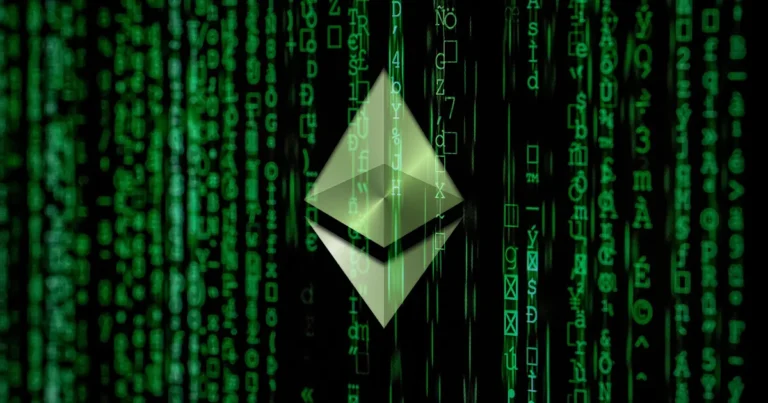23-5-2025 – As Ethereum strives to polish its reputation with a bold new campaign, the blockchain’s grip on its once-unassailable dominance appears to be loosening. The Ethereum Foundation’s 2025 “Trillion Dollar Security Initiative” seeks to position the network as the unrivalled fortress for safeguarding real-world value. Yet, this ambitious rebranding arrives at a time when Ethereum is grappling with a troubling decline in price momentum, developer engagement, and user enthusiasm, while rival Solana surges ahead with relentless energy.
The initiative’s core message—centred on stability, uptime, and ironclad security—aims to restore confidence in Ethereum’s long-term vision. However, the reality on the ground tells a different story. Since the landmark Merge upgrade in 2022, which transitioned Ethereum to a proof-of-stake model, the native token Ether has struggled to keep pace with Bitcoin’s meteoric rise. The price ratio between Ether and Bitcoin has been locked in a persistent decline, underscoring Ethereum’s inability to recapture the market’s imagination. Even technical advancements, such as last year’s Dencun upgrade, have failed to reignite the spark that once drew developers and users in droves.
Meanwhile, Solana has emerged as a formidable challenger, luring a younger, dynamic audience with its low-cost transactions and seamless user experience. Data from Electric Capital paints a stark contrast: in 2024, Solana’s active developer base swelled by 83%, while Ethereum’s shrank by 17%. The allure of speed, affordability, and a thriving ecosystem of memecoins and innovative projects has propelled Solana’s price to an all-time high this year, while Ether’s performance has remained largely stagnant. Ethereum’s fragmented ecosystem, bogged down by the complexity of Layer-2 solutions like Base and Arbitrum, has left developers frustrated, many opting for Solana’s streamlined approach to building decentralised applications.
The Ethereum Foundation’s security-focused campaign has drawn scepticism from industry voices. Katie Talati, head of research at Arca, described the initiative as less a technological leap and more a marketing pivot. “This feels like an attempt to reframe Ethereum’s narrative rather than a genuine breakthrough,” she remarked. Talati suggested that while a sharper focus on user experience and security could eventually draw developers back, users will only follow if compelling applications emerge—a prospect that remains elusive.
Ethereum’s scaling efforts, while notable, have also fallen short of expectations. The Dencun upgrade successfully shifted much of the network’s activity to Layer-2 solutions, easing congestion on the main chain. However, this has come at a cost: the core network’s momentum has waned, and Ether’s burn rate—a key driver of its former deflationary appeal—has plummeted. This erosion undermines one of the primary reasons investors once flocked to the token, further dimming its allure.
In a bid to win over traditional finance, Ethereum’s leadership has turned to lobbying efforts in Washington and on Wall Street. Etherealize, a group backed by co-founder Vitalik Buterin and led by researcher Vivek Raman, is championing Ethereum as the “digital oil” to Bitcoin’s “digital gold.” Raman emphasised the blockchain’s security as its defining strength, arguing that it is the cornerstone of trust for institutional adoption. Yet, this narrative has failed to gain traction. Spot Ether ETFs in the US recorded $42 million in net outflows in 2025, while Bitcoin ETFs raked in a staggering $8 billion across a dozen funds. The institutional appetite clearly leans toward yield and returns, leaving Ethereum’s security pitch struggling to resonate.
The contrast is sharpened by bold moves from Bitcoin advocates like Michael Saylor, whose firm MicroStrategy recently announced plans to sell $2.1 billion in preferred stock to fuel further Bitcoin acquisitions. Such aggressive strategies highlight Bitcoin’s gravitational pull, casting Ethereum’s efforts in an unflattering light.


